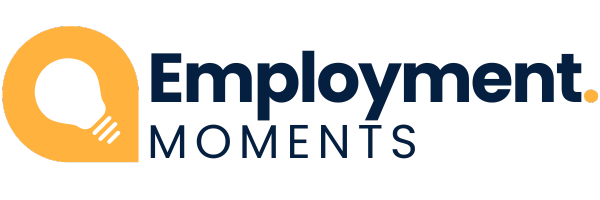In today’s fast-paced corporate world, managing stress at work is key to boosting productivity. Using relaxation techniques can greatly improve focus, helping to counteract stress’s negative impact on mental clarity. By adding mindful breathing, quick mental resets, and calming practices to daily routines, offices can become more focused. This change benefits both employees and companies aiming to create a productive team.
Understanding the Importance of Relaxation Techniques
Relaxation techniques are key to improving mental clarity and lowering stress at work. Many workers face high demands and pressure, which can make it hard to think clearly. By adding relaxation to their daily routine, people can overcome mental exhaustion. This leads to better decision-making and solving problems.
Enhancing Mental Clarity
Relaxation techniques help improve mental focus, which is crucial for getting work done and coming up with new ideas. Mindfulness, for example, helps stay focused despite distractions. Regular use of these techniques can make the workplace more creative and proactive.
Reducing Stress Levels
Reducing stress is another big plus of relaxation practices. Too much stress at work can cause burnout and lower productivity. Deep breathing and short meditation can help reduce stress. This approach builds resilience and supports ongoing professional growth.
Common Relaxation Techniques to Use at Work
In today’s fast-paced work environment, using relaxation techniques like deep breathing, mindfulness, meditation, and progressive muscle relaxation can boost well-being. These practices help reduce tension and improve focus during the workday.
Deep Breathing Exercises
Deep breathing exercises are a quick way to relax. By controlling your breath, you can quickly ease stress. The 4-7-8 method is one technique: breathe in for four seconds, hold for seven, and breathe out for eight.
This method calms your nervous system, helping you concentrate better. Doing it during breaks can greatly improve your work productivity.
Mindfulness and Meditation
Mindfulness and meditation help you stay present. Simple activities like guided imagery or body scans can help manage your emotions. Short meditation sessions can help you reset, even in a busy schedule.
Studies show that practicing mindfulness at work can increase awareness and focus.
Progressive Muscle Relaxation
Progressive muscle relaxation helps release physical tension. It starts with tensing your feet and moves up to your head, helping you notice where you’re stressed. This practice not only eases physical discomfort but also brings a sense of calm.
| Relaxation Technique | Primary Benefit | Implementation Ease |
|---|---|---|
| Deep Breathing | Instant stress relief | Very easy, quick sessions |
| Mindfulness & Meditation | Enhanced emotional regulation | Requires short dedicated time |
| Progressive Muscle Relaxation | Reduction of physical tension | Simple steps, minimal space needed |
Relaxation Techniques at Work for Increased Productivity
Adding relaxation techniques to work boosts productivity. Work breaks and a calm space help focus and work better. Studies show short breaks improve focus and cut stress, helping job performance.
Integrating Short Breaks
Regular breaks are key for staying productive. The Pomodoro Technique mixes work with short breaks. These work breaks refresh the mind, boosting creativity and clear thinking. Many see better performance and enjoy work more with breaks.
Creating a Calm Workspace Environment
A calm workspace is crucial for productivity. Natural light, plants, and tidy desks make a peaceful space. Research shows a neat space cuts distractions and stress. A calm work area improves focus and keeps workers engaged.
| Workspace Element | Impact on Productivity |
|---|---|
| Natural Light | Improves mood and energy levels |
| Indoor Plants | Reduces stress and increases creativity |
| Organized Desks | Enhances focus and minimizes distractions |
| Quiet Zones | Supports concentration and deep work |
How to Incorporate Relaxation into Your Daily Routine
In today’s fast-paced world, taking time to relax is key. Good time management helps you find moments for calm. This boosts your mental health and job happiness.
Setting Aside Time for Relaxation
Short breaks during the day help manage stress. Set aside times for relaxation, like stretching or deep breathing. Being consistent helps you handle work challenges better.
Using Technology to Aid Relaxation
Technology has made relaxing easier, with apps for calmness. These apps offer meditations and sounds to help you relax. They fit into your busy schedule, keeping you balanced at work.
The Role of Workplace Culture in Relaxation Practices
A positive workplace culture is key to helping employees relax. When a company shows it cares about its team, it creates a space for managing stress. This makes everyone feel better and work better together.
Encouraging Team Support for Relaxation
Having support from coworkers and bosses is crucial. When teams relax together, they build trust and friendship. Activities like yoga or just talking about stress relief help everyone feel supported.
Implementing Relaxation Programs
Setting up relaxation programs is important for a good work culture. These might include mindfulness workshops or meditation sessions. They show that a company values its employees’ mental health.
When employees feel valued, they’re happier and more productive. Companies that focus on mental health see big changes in their work environment.
The Science Behind Relaxation and Concentration
Looking into how relaxation and concentration work together shows us a lot about our minds. Studies show that relaxation changes our brain and body in big ways. It not only lowers stress but also makes us smarter in many ways.
Research says that using relaxation techniques can make us work better at our jobs. It’s all about how our brain works.
Impact on Brain Function
Studies show that relaxation makes certain parts of our brain work better. It lowers stress hormones and makes us think clearer. This leads to better focus, memory, and solving problems.
Relaxation research says these good changes happen because we’re less tired and more focused.
Research on Relaxation and Productivity
Many studies show that relaxation helps us work better. People who relax often are happier and more efficient at their jobs. Teams that relax together work better too.
Relaxation helps us think creatively and come up with new ideas. This makes the workplace more exciting and productive.
| Relaxation Technique | Impact on Brain Function | Effect on Productivity |
|---|---|---|
| Deep Breathing | Reduces stress hormones | Enhances focus and performance |
| Mindfulness Meditation | Improves cognitive flexibility | Boosts creativity and problem-solving |
| Progressive Muscle Relaxation | Increases mental clarity | Reduces workplace errors |
Benefits of Practicing Relaxation Techniques at Work
Adding relaxation techniques to work life has many benefits. It helps both employees and the company. It improves focus, balance, and job satisfaction.
Improved Focus and Concentration
Relaxation techniques clear the mind and boost mental clarity. This leads to better productivity and efficiency. A calm mind also means better decision-making and problem-solving.
Better Work-Life Balance
Having a good work-life balance stops burnout and keeps employees well. Regular relaxation helps set work and personal life apart. This makes it easier to enjoy family and hobbies, leading to job happiness and a better life.
Enhanced Job Satisfaction
Relaxation techniques create a caring work environment. This makes employees feel valued and happy. It also lowers absenteeism and boosts employee retention.
| Benefit | Impact on Employees | Impact on Organizations |
|---|---|---|
| Improved Focus | Higher productivity and engagement | Better project completion times |
| Work-Life Balance | Reduced burnout, more time for personal life | Lower turnover rates and absenteeism |
| Job Satisfaction | Increased employee happiness and commitment | Positive workplace culture and stronger teams |
Simple Tips for Getting Started with Relaxation Techniques
Adding relaxation techniques to your workday is easy. Start with just a few minutes each day. Try deep breathing or mindfulness. These short sessions can fit into your busy schedule and help you find what works.
Being consistent is key. Make sure to schedule relaxation breaks in your day. It could be as simple as taking a 5-minute break or using an app to remind you to breathe. A regular routine will make relaxation a part of your daily life.
Using resources can help too. Many workplaces offer workshops or meditation apps. These tools can guide you and support your relaxation journey. They help improve your focus and productivity over time.


